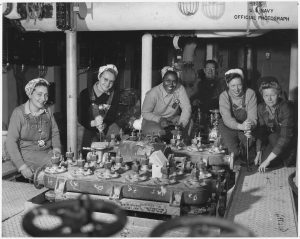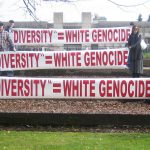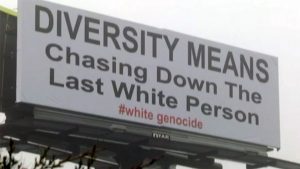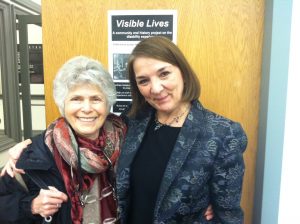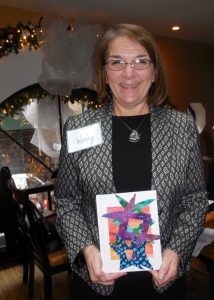I cannot remember the first time that I was sexually harassed. Was it the man in Central Park who exposed his genitals to my sister and me on a sunny afternoon in 1968? Was it the gang of boys on the street telling then 12 year old Wendy what they would like to do to her? [I will not share my response here as it is NSFW.] I can say that I have experienced so many incidents of sexual harassment and discrimination that most of them have blurred in my memory. For the record, I have never been sexually harassed by a woman.
If I limit my experiences of being sexually harassed to the workplace, I have to go back to my waitressing experience while in high school when a customer slid his hand under my uniform to touch my behind. Unfortunately for him, I was holding a full pot of hot coffee and the shock of his invasion resulted in my ‘accidentally’ spilling that hot coffee in his lap. Alas.
Two incidents were too painful to become blurs in my memory. The first was while I was working at a proxy firm on Wall Street when I was 20 years old. Two important pieces of background information: First, the President of the company promised me that I would be reimbursed for the tuition that I paid to NYU for work related classes that I was taking. Second, after being on the job for 7 months, I happened to be in the Personnel office and glanced down to see a payroll record for an employee who I supervised. This man was an old Army buddy of my boss’s boss, ‘Hugh’. He was lazy, incompetent, and spent large segments of the day roaming around and smoking cigarettes in the staircase. I was appalled to learn that this person was being paid $10,000 more than I was. My immediate supervisor was away on vacation so I marched into Hugh’s office and confronted him. He explained to me that ‘Frank’ had a family to care for and needed the money. I replied that this information was irrelevant. I should not be supervising someone, especially someone who was not carrying his own weight, who made more money than me. Hugh said that we would discuss this when my supervisor returned. He added that they were very pleased with my performance and that I would be pleased with my bonus and salary increase, which would be shared with me at the end of December. During the holiday party a few weeks later, I went into the kitchen area to get a drink and the President of the company came up behind me, grabbed me by the shoulders, turned me around, pushed his body against mine, pinning me to the cabinet behind me, put his lips on mine and shoved his tongue into my mouth. I was stunned! I reflexively pushed this man away who was easily more than twice my age and a foot taller than I. I ran from the area into the restroom where I repeatedly rinsed my mouth in the sink. After some time, I skulked out of the bathroom and left the party.
The next week, the bonuses and raises were announced. I received a standard 20% raise and a $250.00 dollar bonus. The staff member with the ‘family to raise’ also received a 20% raise and based on his higher salary, a $500.00 dollar bonus. I lost my ability to control myself. I had also repeatedly been told that my tuition reimbursement check would be included in this pay period, but it was not. I went into the President’s office and although I was trembling terribly, said that this situation was unacceptable and that I expected him to remedy the ‘error’ on my bonus and increase and to have a check issued for my tuition, as agreed upon. He began very slowly to tell me that he really should not have promised me tuition reimbursement as it was not ‘official’ policy and other employees might feel jealous if I were to get special treatment. He also said that there was nothing that he could do about the raise or bonus as that was ‘Hugh’s’ responsibility and he would not interfere in an executive’s decisions about his staff. He then stood up and walked out of his office. His tone and facial express clear to me that he was punishing me for rejecting his sexual overture. I stormed into ‘Hugh’s’ office and, after telling him what I thought about his favoritism, resigned and left the office. I felt disgusted, defeated, and afraid that since I had resigned with so much drama, I would neither get unemployment or a reference. I did get both. In retrospect, I am guessing that they decided that they got a break when I resigned and kept my silence. I did not have the vocabulary at the time to identify my situation as ‘Quid Pro Quo’ sexual harassment.
Two years later, I was working in NYC’s Garment District for a manufacturer of accessories. I was reporting to two vice presidents (marketing and sales). I went into the office of the vice president of operations to ask him about a shipment for an important customer. We were leaning over a work table in his office scanning several computer printouts. It was the early 80s’ and I had on a pencil skirt, man tailored blouse and a skinny 1950s era tie. He said, “Nice tie!” and ran his hand down my tie which was hanging down as I leaned over the table. I felt the hairs on the back of my neck stand up, but before I could move, he grabbed me, spun me around and pushed me down on the table. My skinny high heels slipped out from under me and I was falling back onto the table and felt that I would fall onto the floor. In a panic with my right hand, I grabbed his tie which was now hanging down on me, to keep myself from falling. My left hand landed on the table in an attempt to keep myself from slipping onto the floor. I realized that my hand was on a pair of scissors. I remember thinking “What is a pair of scissors doing here?!” I grabbed the scissors and cut off his tie. He went flying back across the room. I fell down with the scissors in one hand and a section of his tie in the other. I scrambled up off the floor and without seeing or thinking ran down the hall to my office, which I shared with three other people. My co-workers, seeing my distress ran to me asking what had happened.
Once I calmed down, I went to the senior vice president’s office. My attacker as well as my two bosses reported to her. She was married to the President of the company. She came around from her desk and sat next to me, hugged me, handed me tissues and water, told me that it must have been shocking. She said that she would call the car service to take me home. That I should take off the next day (Friday), and have a relaxing weekend with my husband. She said that on Monday morning we would meet and figure out what to do. (Some relevant information about this vice president is that he was having an open affair with another woman in the office. He was married and every few weeks his wife would come to meet him prior to their going out to dinner or wherever. I always cringed when she came in because I could not believe that she did not know that her husband was cheating on her.) The President of the company also had a reputation as a ‘womanizer’ and I avoided being alone with him because he made me uncomfortable.
That Monday morning, I came into the office ready to be told that my attacker had been fired. My mother worked for the NYS Department of Labor and I had called her and discussed the matter. She explained that sexual harassment was against the law and that the employer had the responsibility to protect employees from this kind of treatment. When I arrived at the office, two of my co-workers told me that a few of the other women had had similar experiences with ‘Frank’. I was confident that the organization would do the right and legal thing. So, when the senior vice president told me how remorseful ‘Frank’ was, that this would certainly never happen again, how valued I was as an employee, how I had such a great career opportunity with the company, and blah, blah, blah. I told her that this was unacceptable. I shared what I had learned about the other employees who were being harassed by ‘Frank’. I told her what my mother had told me. Her tone and demeanor changed completely. She sat up straight and said, “Frank has a family to take care of! Do you expect us to throw him out into the street after all of the years he has worked here?!” I just stood up and said, “No.” I was nauseated as I walked to my desk and collected my things. My co-workers were extremely upset and tried to keep me from leaving, but there was no point. I filed for unemployment and my claim was denied. So, I filed a sexual harassment complaint with the State. My unemployment claim was approved as was 3 months of ‘front pay’ to allow me time to find a new job. My resignation was considered ‘constructive termination’ as the workplace was so hostile that effectively, I would not be able to do my job. At the time, I had no idea how important this and my other experiences as a victim of sexual harassment would be in preparing me to do the work that I was meant to do.
For the rest of the story, please read #METOO and What I Do About it: Part 2 – The Problem and #METOO and What I Do About it: Part 3 – Solutions which will be posted later this week.
Please share your stories and any other feedback that you have so that together we can create lasting solutions to this ancient problem.
Onward!
~ Wendy
October 30, 2107


